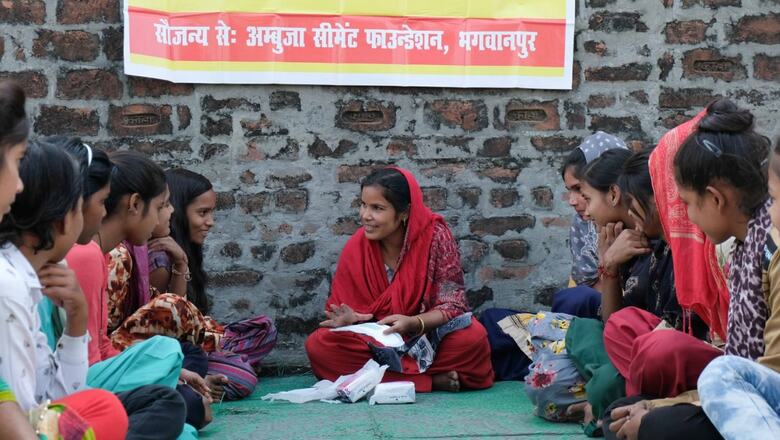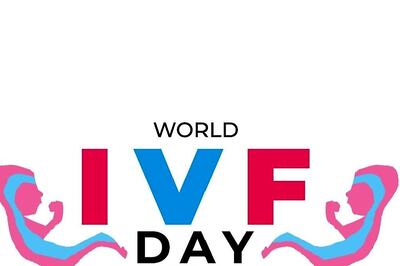
views
Whilst the Swachh Bharat Mission did much to bring the issue of open defecation to the forefront of conversation and action in India – successfully building over 10 crore toilets across the country – there remains much to be done in terms of sanitation for women on the subject of menstrual hygiene.
Despite the scale at which it happens (there are around 355 million menstruating women and girls in India), menstruation remains a taboo subject – shrouded in secrecy and largely suppressed by silence and shame. This leads to a lack of dialogue on the subject at individual, family and community levels.
Pearl Tiwari, Director and CEO, Ambuja Foundation, says, “Many rural women lack access to sanitary napkins due to financial constraints, lack of awareness, and a lack of product availability. With approximately 50% of women using cloth during menstruation, and with almost 20 million girls dropping out of school every year, due to lack of hygiene, separate toilets and availability of sanitary napkins – menstrual hygiene for women and girls is clearly the need of the hour when it comes to sanitation in India.”
Tiwari believes there is a need for a widespread, four pronged approach to tackle this sensitive issue once and for all, and to raise the bar on menstrual hygiene:
- Access to KnowledgeThere is a need to provide both women and girls with access to knowledge on the issue. Here, grassroots health workers have a vital role to play in spreading awareness about the human anatomy, the reproductive system, the menstrual process, appropriate hygiene and changes taking place in the pubertal phase.
- Access to Menstrual ProductsEven with sufficient awareness, finding sanitary pads and napkins can be often difficult, and expensive. With the stigma surrounding sanitary napkins, women also find it challenging to mention its need to the men in the household. Market unavailability has caused many more girls to use cloth napkins – the National Family Health Survey highlights the fact that 50% of women and girls continue to use cloth napkins – which leads to increased chances of infection.
- Access to MHM & WASHSchools in villages often lack facilities for changing and disposing sanitary napkins. This includes gender-specific toilets, clean water and soap, and clean changing places. Consequently, many girls in this age group drop out of school. There is a need for rural health workers and NGOs to work with schools in remote locations to provide clean and hygienic infrastructure for managing menstrual hygiene.
- Access to Safe Disposal of Used absorbentsWith little to no awareness about safely disposing them, sanitary napkins are often disposed in sewage lines, open pits, and commodes. Here, behaviour change through awareness about wrapping and discarding used sanitary napkins, and the correct methods of disposal, along with the provision of disposal machines, is required to allow for safe and hygienic disposal of Sanitary Napkins – along with specially designed collection bags or incinerators should be installed in schools for disposal. Moreover, there is a desperate need for exploration around bio-degradable, but cost effective, sanitary pads to circumvent the mounting waste disposal problem being generated by commercial sanitary napkins in the market.
Menstrual hygiene in India must be elevated into the mainstream dialogue. We, as a country, must bring the issue of Menstrual Hygiene Management out from the shadows, and take comprehensive, holistic action to tackle issues around it, to ensure the health of our women and girls – today and for the future.



















Comments
0 comment